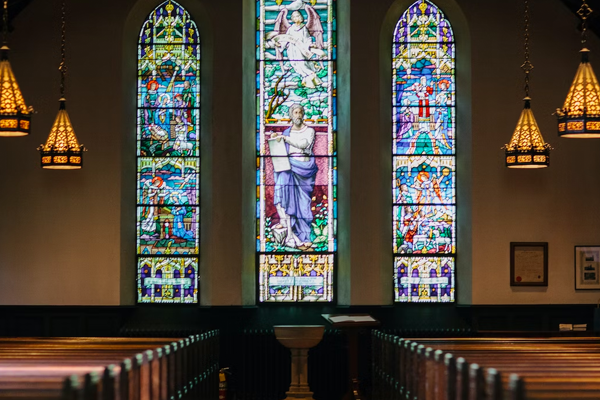Nearly 200 Alabama churches officially seceded from the United Methodist Church (UMC) last weekend following years of conflict over social and theological issues.
Members of the UMC’s North Alabama Conference (NAC) approved the decision to leave at their meeting on Saturday at the Birmingham Jefferson Convention Center (BJCC).
The NAC, which encapsulates UMC churches in Alabama north of Montgomery, once included 638 member churches. Only 440 now remain.
After Southern Baptists, United Methodists are the largest Christian denomination in the state of Alabama.
The UMC was founded in 1968 when the Methodist Church united with the Evangelical United Brethren Church. The UMC is organized into conferences, including the NAC, and is headed by the larger General Conference.
The Methodist movement runs even deeper, however. Spurred by English theologian John Wesley, Methodists originally sought to reform the Church of England. However, Methodists in the United States split from the Church of England following the War for Independence.
Since its establishment, Methodism in the United States has experienced multiple divisions and mergers and has also dealt with changing culture and the rise of secularism.
Like other mainline protestant denominations, the Methodist Church began ordaining women in the mid-20th century. It has failed to take a strong stance against abortion and was once a part of the pro-abortion Religious Coalition for Reproductive Choice (RCRC) before withdrawing in 2016. The UMC also supports federal gun control.
Since its formation, the UMC has officially condemned homosexual activity and supported laws that define marriage as the union between one man and one woman. It has ruled that pastors must not be “self-avowed, practicing homosexuals” and has forbidden churches from celebrating same-sex weddings.
Despite the official stance, the issue of homosexuality has been widely debated in the UMC.
According to Trussville’s Clearbranch Methodist lead pastor Vaughn Stafford, the issues are deeper than social issues. Stafford said that the UMC has become divided over theological disputes, such as the authority of scripture.
“The two main things that are dividing the United Methodist Church are not human sexuality, abortion and our stances with Israel,” Stafford explained. “Those are presenting issues of the day, but the two main things we are really [divided] over [are] our view of the authority of scripture and our view of the person of Jesus as fully human, fully divine.”
These debates led to an agreed-upon process of separation for progressive and traditionalist factions of the church.
Stafford said that traditionalists originally pushed for a rule in the UMC, known as rule 2553, in 2019, which created a window for churches to separate while retaining their church property. Church property has been an issue for seceding churches in other denominations, such as the Anglican churches that left the Episcopalian Church over the last few decades.
Under rule 2553, seceding churches can retain church property by paying a substantial fee to the UMC, which helps pay for unfunded pension liabilities and two years of apportionments.
As of November of this year, nearly 900 churches nationwide have disaffiliated from the UMC. Some have become independent, and others joined new Methodist denominations, such as the conservative Global Methodist Church (GMC), which officially launched in May of this year.
Aside from being a pastor at his local church, Stafford is also an organizer of the GMC. He’s been a part of the Wesleyan Covenant Association (WCA), which he described as “the midwife preparing to give birth to a new traditional Methodist church.”
Traditional Methodists created the WCA several years ago in order to do the groundwork for setting up the GMC.
“It’s some of the greatest Wesleyan theologians alive,” Stafford said.
Stafford insisted that this is only “the first wave” of churches to leave the UMC and predicted that around 3,000 of the 10,000 Methodist churches in the UMC will disaffiliate and that 2,000 will join the GMC. UMC churches have until December 2023 to take advantage of rule 2553.
“It’s a historic day for Clearbranch church, for our pastor, for North Alabama Conference for United Methodist Church, for the history of Methodism, for the reformation movement and for Christianity in general,” Stafford said. “This last Saturday, 198 churches voted to disaffiliate from the United Methodist Church … so that we might be able to stand with 99% of Christians around the world and 2,000 years of consistent Christian teaching, based on the scriptures, that all agree that Jesus was who He said He was as the way, the truth and the life, and that Jesus proclaimed the scripture to be the inspired and authoritative word of God.”
To connect with the author of this story, or to comment, email will.blakely@1819news.com or find him on Twitter and Facebook.
Don’t miss out! Subscribe to our newsletter and get our top stories every weekday morning.










